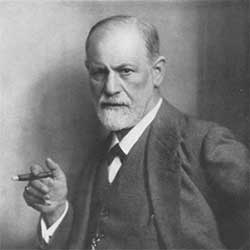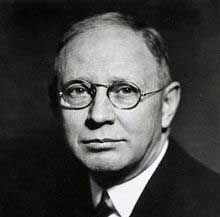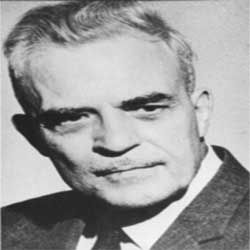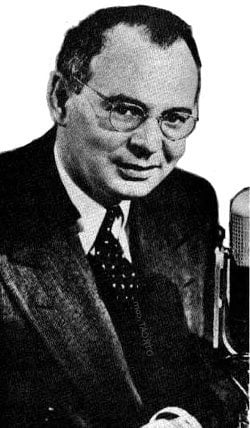Hypnotism has always been surrounded by misconception. Unfortunately, the internet is a very unreliable source of information and many websites contain extremely misleading information. This page provides definitions of hypnosis from various organisations and established authors which help to clarify the way hypnosis is normally defined by more credible sources.
James Braid
 The first definition here is the original one given by James Braid, the Scottish physician and surgeon who first discovered hypnosis in 1841 and founded hypnotherapy
The first definition here is the original one given by James Braid, the Scottish physician and surgeon who first discovered hypnosis in 1841 and founded hypnotherapy
By the term “Neuro-Hypnotism,” then, is to be understood “nervous sleep,” […] a peculiar state of the nervous system, induced by a fixed and abstracted attention of the mental and visual eye, on one object, not of an exciting nature.
However, Braid later reviewed his idea that hypnosis was a specific neurological state and replaced it with the theory that hypnosis was ‘monoideation,’ the fixation of consciousness on a single idea or object:
The real origin and essence of the hypnotic condition is the induction of a habit of abstraction or mental concentration, in which, as in reverie or spontaneous abstraction, the powers of the mind are so much engrossed with a single idea or train of thought, as, for the nonce, to render the individual unconscious of, or indifferently conscious to, all other ideas, impressions, or trains of thought.
Hippolyte Bernheim

Following Braid, Bernheim is often referred to as the father of modern hypnotherapy, or certainly the most influential pioneer of hypnotherapy beside its founder. Professor Bernheim was credited with popularising the view, largely taken for granted today, that hypnosis is fundamentally a state of heightened suggestibility itself induced by means of suggestion.
To define hypnotism as induced sleep, is to give a too narrow meaning to the word, to overlook the many phenomena which suggestion can bring about independently of sleep. I define hypnotism as the induction of a peculiar psychical condition which increases the susceptibility to suggestion. Often, it is true, the sleep that may be induced facilitates suggestion, but it is not the necessary preliminary.
Sigmund Freud

After studying briefly with Bernheim, Freud pioneered the use of hypnosis as a vehicle for regression and catharsis between about 1885 and 1905. However, he abandoned it in order to develop his own technique of psychoanalysis. Nevertheless in an article published late in his career Freud returned to the subject of hypnotherapy once again, suggesting that it might be necessary to somehow combine the findings of psychoanalysis with the methods of hypnotherapy in order to produce a briefer and more powerful form of treatment.
It has long been known, though it has only been established beyond all doubt during the last few decades, that it is possible, by certain gentle means, to put people into a quite peculiar mental state very similar to sleep and on that account described as ‘hypnosis.’ […] The hypnotic state exhibits a great variety of gradations. In its lightest degree the hypnotic subject is aware only of something like a slight insensibility, while the most extreme degree, which is marked by special peculiarities, is known as ‘somnambulism’, on account of its resemblance to the natural phenomena of sleep-walking. But hypnosis is in no sense a sleep like our nocturnal sleep or like the sleep produced by drugs. Changes occur in it and mental functions are retained during it which are absent in normal sleep.
Clark L. Hull
 Hull was the first major scientific researcher to specialise in the study of hypnotism. He was a Professor of Psychology at the universities of Wisconsin and Yale. Hull’s orientation was behaviourist and he discusses in detail the functional definition of hypnosis in terms of hyper-suggestibility
Hull was the first major scientific researcher to specialise in the study of hypnotism. He was a Professor of Psychology at the universities of Wisconsin and Yale. Hull’s orientation was behaviourist and he discusses in detail the functional definition of hypnosis in terms of hyper-suggestibility
The only thing which seems to characterise hypnosis as such and which gives any justification for the practice of calling it a “state” is its generalised hypersuggestibility.
After reviewing the comments of previous experts on hypnosis, Hull concludes,
However, different may be the theoretical bias of the various writers, and however varying may be their interpretation of the phenomenon, there appears to be no disagreement regarding the fundamental fact that whatever else it may be, the hypnotic trance is a state of heightened susceptibility to suggestion.
Milton Erickson
 Erickson is probably the most influential hypnotherapist of the 20th century and the originator of a novel and distinctive style of hypnotism, referred to as “Ericksonian.”
Erickson is probably the most influential hypnotherapist of the 20th century and the originator of a novel and distinctive style of hypnotism, referred to as “Ericksonian.”
The hypnotic trance may be defined, for purposes of conceptualisation, as a state of increased awareness and responsiveness to ideas.
It [hypnosis] is a state of consciousness –not unconsciousness or sleep– a state of consciousness or awareness in which there is a marked receptiveness to ideas and understandings and an increased willingness to respond either positively or negatively to those ideas.
The British Medical Association (BMA)
This definition concentrates on the measurable psychological and physiological changes in hypnosis. Note well that it deliberately substitutes ‘altered attention’ for the misleading expression ‘induced sleep’ used by the Book of Statues. Although phrased in medical jargon, this is a considerable improvement on previous definitions.
A temporary condition of altered attention in the subject which may be induced by another person and in which a variety of phenomena may appear spontaneously or in response to verbal or other stimuli. These phenomena include alterations in consciousness and memory, increased susceptibility to suggestion, and the production in the subject of responses and ideas unfamiliar to him in his usual state of mind. Further, phenomena such as anaesthesia, paralysis and rigidity of muscles, and vasomotor changes can be produced and removed in the hypnotic state.
Dave Elman

Mr Elman’s techniques are very popular with many hypnotherapists. He pioneered the use of rapid induction techniques and was a great advocate of the hypno-analytic approach to therapy.
Hypnosis is a state of mind in which the critical faculty of the human is bypassed, and selective thinking established.
The American Psychological Association (APA)
This is a scientific definition of hypnosis published by Division 30 of the APA, the division for psychological hypnosis,
Hypnosis typically involves an introduction to the procedure during which the subject is told that suggestions for imaginative experiences will be presented. The hypnotic induction is an extended initial suggestion for using one’s imagination, and may contain further elaborations of the introduction. A hypnotic procedure is used to encourage and evaluate responses to suggestions.
When using hypnosis, one person (the subject) is guided by another (the hypnotist) to respond to suggestions for changes in subjective experience, alterations in perception, sensation, emotion, thought or behaviour.
Persons can also learn self-hypnosis, which is the act of administering hypnotic procedures on one’s own. If the subject responds to hypnotic suggestions, it is generally inferred that hypnosis has been induced. Many believe that hypnotic responses and experiences are characteristic of a hypnotic state. While some think that it is not necessary to use the word “hypnosis” as part of the hypnotic induction, others view it as essential.
Details of hypnotic procedures and suggestions will differ depending on the goals of the practitioner and the purposes of the clinical or research endeavor. Procedures traditionally involve suggestions to relax, though relaxation is not necessary for hypnosis and a wide variety of suggestions can be used including those to become more alert.
Suggestions that permit the extent of hypnosis to be assessed by comparing responses to standardized scales can be used in both clinical and research settings. While the majority of individuals are responsive to at least some suggestions, scores on standardized scales range from high to negligible.
Traditionally, scores are grouped into low, medium, and high categories. As is the case with other positively-scaled measures of psychological constructs such as attention and awareness, the salience of evidence for having achieved hypnosis increases with the individual’s score.
If you are a mental health practitioner, you can greatly benefit by learning more about hypnosis and how to integrate it with different therapeutic techniques like CBT, REBT, Mindfulness, Behavioural Therapy, NLP and Psychoanalysis. Checkout this comprehensive eclectic course for mental health practitioners.

